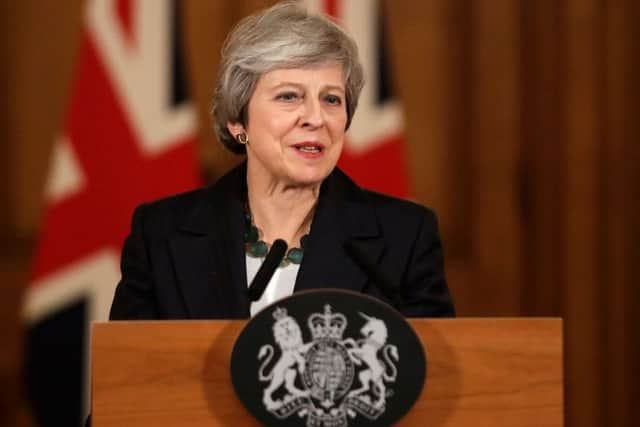Why May's draft withdrawal deal made Brexiters so angry
The draft political declaration on the possible ‘deep and special’ future UK-EU relationship is short but wide in scope and will get added to before the 25 November EU summit. Talks would start next April straight after Brexit day. For the Brexiters, what’s not to like?
The declaration ranges from goals of a trade deal on goods and services to counter-terror cooperation, from level playing field conditions which will cover ‘state aid, competition, social and employment standards, environmental standards, climate change and relevant tax matters’, to foreign policy cooperation, energy, access to fishing waters, air, road and passenger transport agreements.
Advertisement
Hide AdAdvertisement
Hide AdThe aim of all this is to replicate or replace most of the arrangements the UK currently enjoys as an EU member state. And mostly, the replacements will be worse. Service sectors will not have the same access to the EU market – and if a deal goes further than the ‘Canada dry’ approach originally suggested, it will still mean a substantial drop in UK-EU services trade.


For goods, ‘deep regulatory and customs cooperation’ is envisaged. But this won’t result in the frictionless borders that currently allow supply chains and just-in-time production. Indeed, the UK and EU’s joint introductory note leaves open how close the ‘as close as possible’ trade relationship will be given the EU’s wish to maintain the integrity of its customs union and single market and the UK’s wish for an independent trade policy.
This underlies the central problem facing the Brexiters – if the future relationship can’t ensure frictionless borders then the Irish backstop will begin. While the draft withdrawal agreement allows for a one-off extension of the transition period, after that, unless the Irish border can be as open as now then the all-UK customs union backstop will kick in.
And there will be extra provisions for a deeper customs and regulatory relationship for Northern Ireland so it will have a special status in the backstop – effectively part of the EU’s single market for goods. In a basic customs union, the UK will also be a rule-taker and bound to a range of level-playing field provisions, without unilateral control of when it can leave.
In the end, the Brexit challenge remains as it always was. Leaving the single market and customs union means a hard UK EU border which will trigger an Irish backstop. The Brexiters have not found any realistic solution to that. And a ‘soft’ Brexit of staying in both single market and customs union – or a ‘May-style’ indefinite customs union – creates a major democratic deficit that most Remainers and Brexiters alike reject. The real challenge is to the complaining Brexiters: if there is no feasible Brexit solution without either a democratic deficit, damage to UK trade and growth and/or a hard Irish border, then why are we leaving the EU?
Kirsty Hughes is Director of the Scottish Centre on European Relations